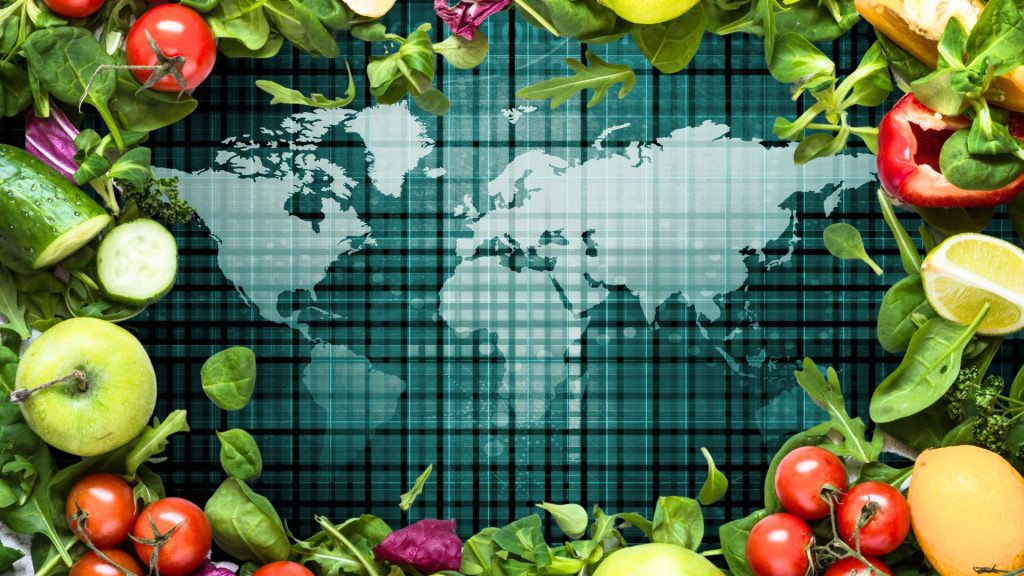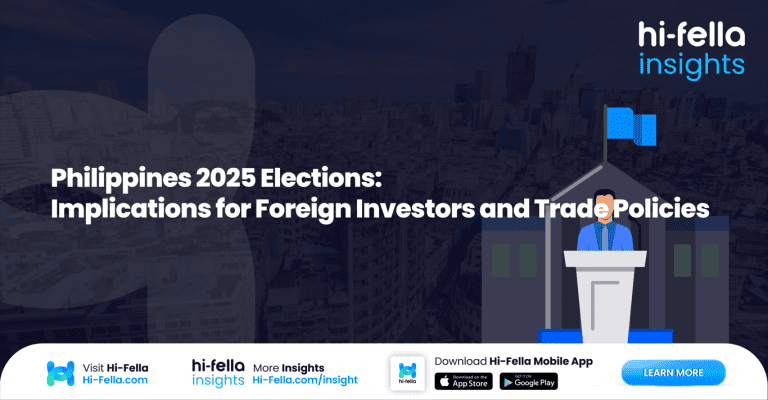The global food industry plays a pivotal role in feeding populations across the world, and certain nations have emerged as prominent players in the arena of food exports. These countries have not only achieved remarkable success in terms of food export value but also specialize in exporting specific types of food products, including grains, fruits, vegetables, meat, dairy, and seafood. However, this success doesn’t come without its challenges and opportunities. From stringent food safety standards to intense market competition and the ever-growing importance of sustainability practices, top food-exporting nations must navigate a complex landscape to maintain their positions and adapt to the changing demands of the global food market. Get to know the top food-exporting countries and their pivotal role in feeding the world. Learn about the types of food they export and their impact on global markets. What countries export the most food? These five examples are the countries that export the most food.
- USA
The United States, a major powerhouse in the global food industry, is making profound impacts through modernization and technology adoption. Leveraging high-tech solutions such as information technology, the country has revolutionized food production and distribution, contributing to its role as a key player in the world’s food supply. The U.S. is renowned for its diverse agricultural exports, encompassing grains, meat, and dairy products, with agricultural exports reaching a record value of $191 billion in fiscal year 2022. However, the American food industry faces several challenges, including the imperative of upholding stringent food safety standards, intense market competition, the growing demand for sustainability practices, complex regulatory compliance, and the need to address health and nutrition concerns.
Amidst these challenges, the United States also holds promising opportunities. By improving food safety through advanced technologies and traceability systems, investing in innovation for high-quality products, embracing sustainability practices, expanding into new export markets, and optimizing supply chain management through digitalization, the U.S. can maintain its influential position in the global food market. These endeavors are essential for addressing evolving consumer preferences, meeting sustainability demands, and ensuring long-term competitiveness while enhancing consumer trust and market share.
- China
China, with its population exceeding 1.4 billion, stands as a formidable player in the global food industry, boasting an annual food export volume of 120.1 million tons and a value of $32.9 billion. Leveraging advanced technology and smart farming practices, China efficiently caters to the needs of its vast population while consistently ranking among the top food-exporting nations. Key exports include a variety of foods, from rice and vegetables to soybeans and fruits, driven by its growing middle class and substantial agricultural sector. However, China grapples with a range of challenges, including food safety standards, market competition, sustainability practices, regulatory compliance, and health concerns. These issues impact product quality and market access, necessitating proactive solutions.
Despite these challenges, China is presented with promising opportunities. By bolstering food safety measures, investing in innovation and high-quality products, embracing sustainability practices, diversifying export markets, and optimizing supply chain management through digitalization, China can strengthen its global food industry position. These endeavors are not only essential to addressing evolving consumer preferences but also crucial for ensuring long-term competitiveness and increasing global influence.
- Netherlands
Despite its relatively small population of over 17 million, the Netherlands has established itself as a global food export powerhouse, with an annual volume of 37.2 million tons and a value of $24.9 billion. The Dutch emphasis on innovation, sustainability, and commitment to quality has made it a leader in exporting products like vegetables, dairy, and meat. However, the Netherlands faces substantial challenges in its pursuit of maintaining and expanding its global food export presence. Stringent food safety standards, fierce market competition, sustainability practices, regulatory complexities, and the need for resilient supply chains are key challenges that can impact product quality and market access.
Nevertheless, opportunities abound for the Netherlands. By investing in innovation and product quality, focusing on food safety and quality assurance, embracing sustainability practices, diversifying export markets, and leveraging digitalization for supply chain management, the Netherlands can continue to strengthen its reputation for high-value food products while expanding its presence in the global market. These efforts will not only enhance competitiveness but also cater to evolving consumer preferences and regulatory demands, contributing to the country’s ongoing success in the global food export industry.
- Germany
Germany, with an annual food export volume of 28.3 million tons and a value of $39.4 billion, stands out as a significant player in the global food export industry. Renowned for its top exports, which include meat, processed foods, and dairy products, Germany’s export trends are underpinned by its strong agricultural sector, central European location, and a population exceeding 83 million. Nevertheless, Germany encounters several formidable challenges in maintaining its position. These include stringent food safety standards, market competition, sustainability practices, regulatory compliance, and the need for supply chain resilience. These challenges can impact product quality, market access, and the overall reputation of German food exports.
On the brighter side, Germany has ample opportunities to enhance its food export industry. These include investing in innovation and product quality, strict adherence to food safety and quality assurance, embracing sustainable practices, diversifying export markets, and leveraging digitalization for efficient supply chain management. By capitalizing on these opportunities, Germany can continue to uphold its reputation for high-quality and diverse culinary products while expanding its presence in the global food market, particularly by catering to evolving consumer preferences and regulatory demands.
- Vietnam
Vietnam, a country with a population of approximately 97 million people, has emerged as a notable player in the global food export industry, driven primarily by its seafood, coffee, and rice exports. This surge in food exports has significantly contributed to the nation’s economic growth and international trade presence, with a total annual volume of 28.2 million tons and an annual export value of $9.1 billion. However, this success comes with its share of challenges. Vietnam faces the critical challenge of meeting stringent food safety standards imposed by international markets, particularly in the EU and the US, which can lead to rejected shipments and damage to its reputation. Moreover, intense market competition, the need for sustainable practices, complex regulatory compliance, and the necessity of building supply chain resilience have all been persistent challenges.
On the flip side, Vietnam holds several opportunities to sustain and enhance its food export industry. Diversification of exports, investment in food safety, and the adoption of sustainable agriculture and aquaculture practices can not only open up access to high-value markets but also cater to the increasingly environmentally conscious global consumer base. Innovations in food processing and value addition can boost competitiveness and profitability, while participating in regional trade agreements like the Comprehensive and Progressive Agreement for Trans-Pacific Partnership (CPTPP) can provide preferential market access and expand export opportunities. By addressing these challenges and capitalizing on these opportunities, Vietnam can continue to strengthen its position as a significant player in the global food trade, ensuring economic growth and sustainability in the industry.
In the global food export arena, nations like the United States, China, the Netherlands, Germany, and Vietnam serve as key players, excelling in both the volume and value of their food exports. While specializing in diverse food product categories, they collectively grapple with challenges such as stringent food safety standards, fierce market competition, sustainability demands, regulatory complexities, and the need to address evolving consumer preferences and health concerns. However, these challenges come hand in hand with significant opportunities. By investing in innovation, enhancing food safety, embracing sustainability, diversifying export markets, and harnessing digitalization for efficient supply chain management, these nations can effectively navigate the complexities of the global food industry, ensuring their pivotal roles in feeding the world and contributing to both economic growth and global food sustainability.






